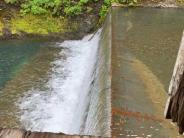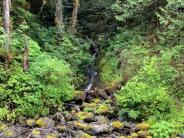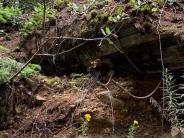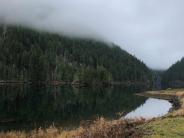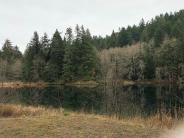Olympic Gravity Water System (OGWS)
Where does our water come from? The City of Port Townsend’s municipal water is supplied by the Big Quilcene and Little Quilcene Rivers. The water travels by gravity to the City via a 30-mile pipeline. The existing surface water system has been in operation since 1928, making it one of the oldest water systems in Washington State. In addition to serving the residents of the City of Port Townsend, water is provided to the Port Townsend Paper Corporation, Glen Cove, and parts of the unincorporated area west of town.
Ninety-five percent of the municipal watershed is in the Olympic National Forest with the remainder in the Olympic National Park. Cooperation between the City and Forest Service for protection of the watershed dates back to the construction of the surface water diversions and transmission pipeline.
Water served by the City of Port Townsend is filtered with a membrane filtration system that is designed to remove potential microbial contaminants. Chlorine is added after filtration to disinfect the water and to prevent contamination of the distribution system.
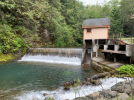
Big Quilcene Diversion
The Big Quilcene Municipal Watershed is approximately 48 square miles in the Olympic National Forest and National Park. The Big Quilcene River is the main water source for the City of Port Townsend. Subject to minimum instream water requirements, the City can withdraw up to 30 cubic feet per second (19.4 million gallons per day) of water from the Big Quilcene River.
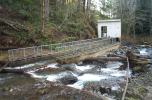
Little Quilcene Diversion
The Little Quilcene Municipal Watershed is approximately 11 square miles in the Olympic National Forest. The Little Quilcene Diversion conveys water via a one-mile pipeline to Lords Lake Reservoir. Subject to minimum instream water requirements, the City can withdraw up to 9.56 cubic feet per second (6.2 million gallons per day) of water from the Little Quilcene River.
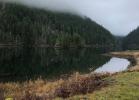
Lords Lake Reservoir
Lords Lake is a raw water storage reservoir that holds approximately 500 million gallons of water. Water stored in Lords Lake Reservoir is used by the City when storm events stir up sediment in the rivers and in late summer when stream flows are low.
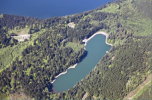
City Lake Reservoir
City Lake is a raw water equalization reservoir located 10 miles from town. The lake reservoir holds 144 million gallons of water. Water from the Big Quilcene River and Little Quilcene River (via Lords Lake) passes through City Lake as it travels to Port Townsend.
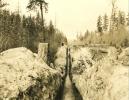
History
From the late 1800s until 1904 the Spring Valley Water Company (SVWC) supplied water to the City of Port Townsend from a well near the pond at F Street and San Juan Avenue. The SVWC began planning a diversion on Snow Creek as additional water was needed for growth. In 1904 the City acquired the SVWC and constructed the Snow Creek diversion and 20-mile wood stave pipeline. Snow Creek served as the City's water supply from 1906 until 1928 when construction of the Crown-Zellerbach kraft paper mill (now Port Townsend Paper Corporation) and increased City demands exceeded the Snow Creek capacity.
Port Townsend applied for and received water rights to the Big Quilcene and Little Quilcene Rivers in 1927. The Big Quilcene timber crib diversion and 28.5 miles of 30-inch wood stave and welded steel transmission pipe between the Big Quilcene River and Port Townsend were completed in 1928. Between the 1950s and 1970s the wood stave pipe was replaced with welded steel pipe.
The Little Quilcene River diversion was developed in 1956 as a supplemental supply to the Big Quilcene River. A timber crib diversion dam was constructed on the Little Quilcene River to convey water via a pipeline to Lord's Lake Reservoir. The Little Quilcene River timber crib diversion was replaced in 1995 with a concrete diversion structure
Port Townsend has maintained ownership the OGWS facilities and water rights but leased the operation and maintenance of the OGWS source water collection and transmission system to the Port Townsend Paper Corporation since 1928.

